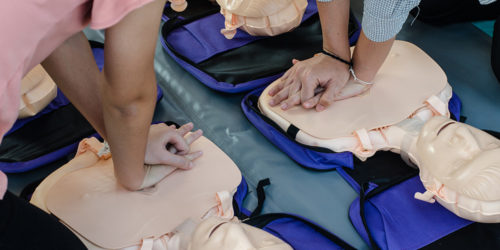Have you ever been at a restaurant when one of the patrons suddenly starts choking on part of their meal? Or have you found yourself in a situation where you are staring at a heart attack victim who is slowly slipping away before your eyes, and you’re unable to offer any help? That’s why it’s always good to equip yourself with some basic first aid techniques, which can help prevent potentially life-threatening situations. Being able to perform first aid or CPR isn’t just a useful skill; it could save a life in a split second.
What are the basic skills of first aid?
Basic first aid skills can help you provide the initial care for wounds, illnesses or accidents, at least until professional help arrives or you reach a medical facility. These procedures also train you on how to handle emergencies within a limited period where you will have to collect the necessary first aid kit, be sensitive towards the patient and be a leader to calm down the situation. Below are some basic first aid skills everybody should know
How to apply CPR
A person can become unconscious for various reasons, such as stroke, cardiac arrest or even epilepsy. In some cases, the heart may not function, resulting in a lack of blood to the body organs. At this point, cardiopulmonary resuscitation (CPR) can help save them. CPR helps restore the supply of oxygen and blood to the body organs. It can be performed using chest compressions and artificial respiration. By enrolling for CPR and first aid training, you will be taught the proper steps on how to do CPR efficiently.
Stopping heavy bleeding
Bleeding is the most common after-effect of an accident or injury. It must be controlled within minutes after the injury in order to save the patient’s life. You can stop the bleeding by applying pressure on the cut or wound using a disinfected cloth or anything else you have on hand. Raising the wounded leg or arm above the heart can also help to slow down the bleeding. The basic first aid skills will equip you with more techniques to stop the bleeding and make sure that the victim does not bleed to death.
First aid for choking
Choking is common in both adults and children. In most cases, it resolves on its own, but in others, it may lead to a dangerous situation where a foreign material can get lodged inside the victim’s airway. By performing the Heimlich maneuver you can expel objects that are blocking the airway.
Cleaning and dressing wounds
Small wounds, cuts, and bruises can be cared for by applying simple first aid procedures. First, clean and disinfect the wound with warm water or a disinfectant. Then apply a topical antibacterial cream, and cover the wound with a bandage. The primary objective of this first aid basic technique is to keep wounds clear from any germs, which can be a source of infection.
Why should you learn first aid?
If you have heard all the crazy first aid stories from a teenager saving an 11-month baby after performing CPR to a woman saving the life of a car crash victim, you will not want to downplay the importance of learning first aid techniques. First aid skills can:
- Help save lives
- Prevent the situation from becoming worse
- Create the confidence to care
- Encourages healthy and safe living
How much can CPR increase the chance of survival?
Every year, more than 1.6 million people in the U.S suffer from heart attacks, and around 300,000 of them die before they reach a hospital. Approximately 1,000 Americans die every day due to sudden cardiac arrest. Most deaths among children are due to accidents and because they did not get immediate treatment seconds after the accident.
The earlier CPR is administered, the higher the chances of saving the victim’s life. According to the American Heart Association (AHA), 150,000 adults and children could be saved every year if CPR was performed at the right time.
These CPR survival statistics shows how performing this lifesaving skill on a patient can change the course of events and save a person’s life. CPR and first aid training are very important for everyone. You never know when you may need them.
What Can I Do Next?
We offer CPR and First Aid Online Classes in case you ever need these life saving skills. Use “blog5” for 5% off your purchase when you complete a course and purchase your online CPR or First Aid certificate.




